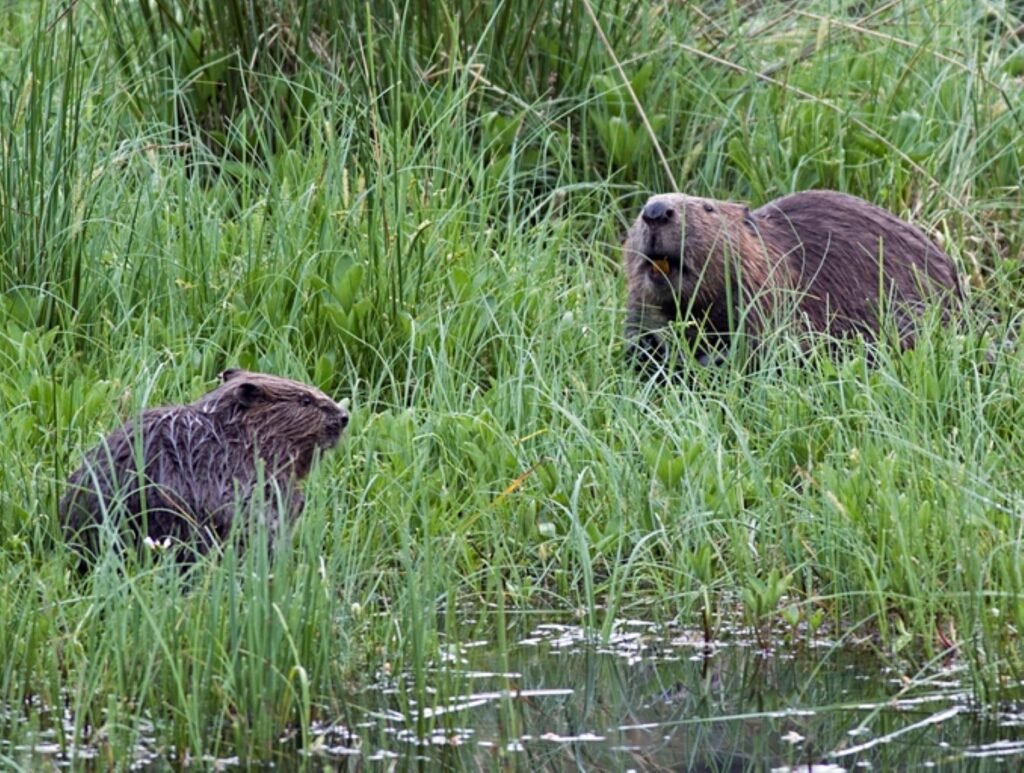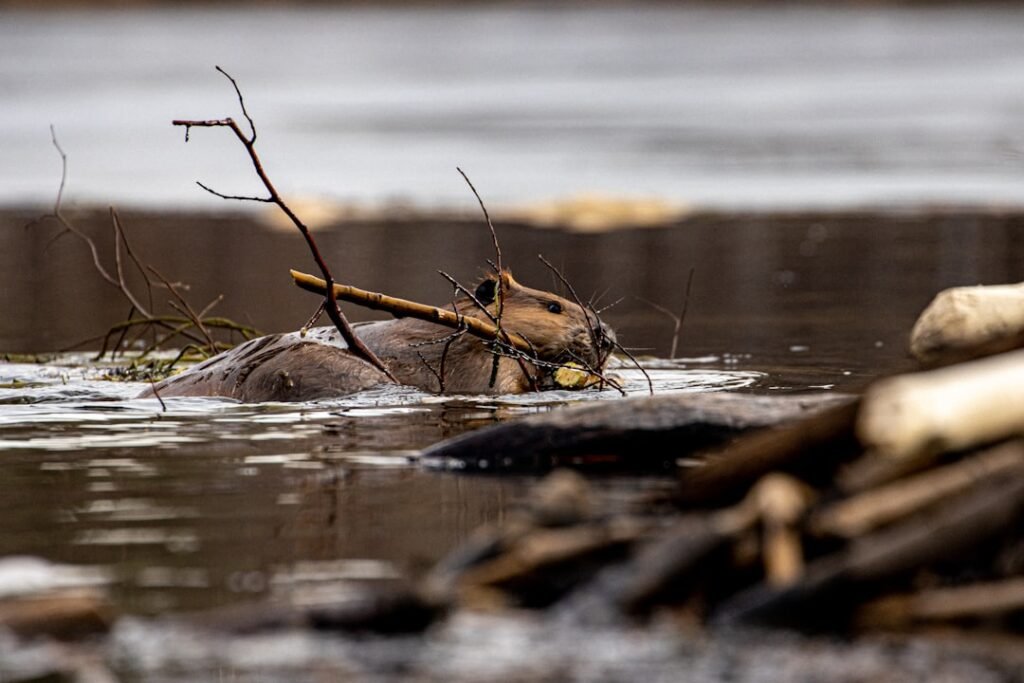Picture this: Oregon’s streams and likely harbored a substantial population of North American beaver before European colonization. Today, these remarkable rodents are making a comeback as nature’s most effective stream restoration engineers, transforming degraded waterways across the Pacific Northwest in ways that seem almost magical.
What makes this story even more compelling is that scientists are just beginning to understand the full scope of beaver power. These furry architects don’t just build dams – they literally redesign entire watersheds, creating complex networks of wetlands that support countless species and provide critical ecosystem services worth millions of dollars.
Nature’s Ecosystem Engineers Transform Landscapes

Beavers have the ability to modify ecosystems profoundly to meet their ecological needs, with significant associated hydrological, geomorphological, ecological, and societal impacts. What’s remarkable about these animals is their unique position in nature – they’re one of the few species besides humans that actively reshape their environment on such a dramatic scale.
When beavers move into an area, they don’t just adapt to existing conditions. Instead, what’s earned the American beaver the nickname “nature’s ecosystem engineers” is the work they do to shape their environment. Their dams create a cascade of changes that ripple through the entire ecosystem, affecting everything from water temperature to wildlife populations. Aside from humans, beavers do more to shape their environment than any other species.
Bridge Creek: The Birthplace of Modern Beaver Restoration

The story of modern beaver-assisted restoration begins in central Oregon’s Bridge Creek, where scientists conducted what would become a groundbreaking experiment. While beavers’ natural engineering abilities are well-known, the project on Oregon’s Bridge Creek is the first to show that their reengineering of streams can yield such pronounced improvements in fish populations.
Around 2009, scientists tested what would happen if beavers got a foothold. The scientists jump-started the beavers’ work by sinking posts (called beaver-dam analogs, or BDAs) into the streambed of Bridge Creek to help the animals build and anchor their dams against the current. The results were nothing short of spectacular – within several years, fish populations showed significant increases in the restored sections.
Beaver Dam Analogs: Human Engineering Meets Natural Design

Beaver Dam Analogs (BDAs) are human-made structures, inspired by beavers, that help to improve the health of aquatic ecosystems. Beavers build dams that create pools, hold back sediment, and slow and spread the passage of water. These simple yet effective structures have become a cornerstone of modern stream restoration efforts across Oregon.
The beauty of BDAs lies in their simplicity and cost-effectiveness. The results suggest that, under the right conditions, beavers can restore the health of streams and their fish, faster and likely at lower cost than traditional river restoration that relies on expensive heavy equipment. “We also used a very cheap approach which mainly relied on beavers doing most of the heavy lifting for us.”
Remarkable Recovery Stories Across Oregon

The success stories emerging from Oregon’s beaver restoration projects are genuinely inspiring. To our astonishment and delight… we discovered that a remarkable restoration project was already well underway – thanks to resident beavers. By all appearances, over a period of years these beavers had managed to establish an impressive series of tall and wide dams entirely with cattails.
In February, over a dozen beaver enthusiasts donned snowshoes and filed to a headwaters creek in southwest Oregon to watch as five beavers were introduced to their new home. The release marks a milestone for the Vesper Meadow Education Program, which has been rehabilitating wet meadow habitat on private land nearby. These hands-on restoration efforts represent a growing movement across the state.
Climate Change Champions: Cool Water Solutions

As temperatures rise due to climate change, beavers are becoming increasingly valuable allies in the fight to protect cold-water fish species. High water temperatures stress salmon, with extended exposure to temperatures in the upper 60s to low 70s Fahrenheit potentially being lethal. This is where beaver engineering becomes absolutely crucial for species survival.
This caused, if not a decrease in temperature (which was found to be up to 10 °C cooler in streams with beavers than in those without), at least no change in temperature. This could be huge for salmon who need refuge from hot water that is only getting hotter with the warming climate. This vegetation, in turn, shades and streams, further cooling the water for native fish. In many cases the stored groundwater also returns to surface flow in downstream reaches, providing important cool water to chill too-warm summer streams.
Salmon Superhighways: Creating Fish Habitat

The relationship between beavers and salmon is a perfect example of natural partnership. Beaver-created and maintained habitat provide key juvenile coho salmon winter rearing habitat, decrease stream temperatures, increase channel complexity and habitat connectivity, and expand riparian habitat all along migration corridors. This isn’t just theory – it’s measurable, life-saving habitat improvement.
By creating ponds, beaver dams enhance over-wintering habitat that can shelter young salmon from swift, high water flow events. Studies conducted in streams along the Oregon coast suggest that the winter survival of juvenile Coho salmon, which can be swept downstream by fast flowing winter streams, depends on adequate slow-water habitat. The readily available food and protective environment in beaver ponds lead to increased salmon growth and survival.
Wildfire Protection: Green Firebreaks in Action

Oregon’s wildfire challenges have highlighted another remarkable beaver benefit. Jaspers explains that beaver “affect our landscape on a big level when it comes to fire and climate resiliency.” Recent research suggests that beavers help to protect people and their property from wildfires. ide vegetation fed by beaver ponds acts as a fire break, stopping wildfires from advancing across the landscape.
Wetlands created by beaver dams hold back water, soaking and spreading as beaver create channels throughout the floodplain. The stream’s reduced speed due to damming allows collected water to seep into the ground where it encourages deep plant roots and an abundance of wildlife to thrive. These activities halt fires and make it difficult for them to spread, as well as provide an oasis for wildlife. Through storing water and raising the water table, BDAs increase the moisture of surrounding riparian vegetation, making these systems more resilient to wildfire and can serve as green fire breaks.
Economic Benefits That Add Up to Millions

The economic case for beaver restoration is surprisingly strong. Oregon households value salmon conservation highly, with research showing that Oregonians are willing to pay about $100–$120 per household per year to support a program that promises to increase salmon populations. When you multiply this across the state’s population, the numbers become significant.
Beaver-created and maintained habitat provide key juvenile coho salmon winter rearing habitat, decrease stream temperatures, increase channel complexity and habitat connectivity, and expand riparian habitat all along migration corridors. Increases in beaver-created habitat would therefore aid ODFW and to the state in their efforts to achieve conservation goals for affected species at little to no cost. The return on investment is remarkable when nature does most of the work.
Legislative Support: Oregon’s Progressive Approach

Oregon lawmakers are taking notice of beaver benefits. HB 3464, passed in 2023, reclassified beavers from predatory animals to furbearers on private land. Under the new law, landowners can still kill beavers, but they must obtain a permit and report their “take” to the Oregon Department of Fish and Wildlife. This represents a significant shift in how the state views these ecosystem engineers.
Its sponsor, Oregon Rep. Pam Marsh, said it protects beavers by restricting trapping along waterways on public land that are “impaired.” “But what we know is that beavers can be a helpful element. So that’s what we’re doing.” Of Oregon’s extensive river systems, about a third are classified as impaired by the Oregon Department of Environmental Quality. The scale of potential restoration is enormous.
Challenges and Maintenance: Learning from Experience

Beaver restoration isn’t without its challenges. In addition, ours is the first we know of that quantifies the maintenance effort of BDAs in response to peak flows. We emphasize that effort spent on structure maintenance can help to support some restoration outcomes, like raising groundwater during peak growth periods of riparian vegetation, but maintenance can become intensive and may be impossible during periods of peak sediment transport.
Beavers tend to actively maintain and repair their dams as needed, so why wouldn’t we maintain and repair BDAs? Beaver Works understands that some things require ongoing care to continue functioning properly, which is why we offer post-installation monitoring and maintenance. We want the BDAs to work, which typically comes with volunteer-engaged repair, rebuilding, and adaptive management, and fewer permitting requirements.
Future Expansion: Scaling Up Success

The future of beaver restoration in Oregon looks incredibly promising. Working with NRCS and USFWS, TU is planning for a second and third phase in Rock Island Creek. Phases II and III will be significantly larger than Phase I, with an upper range of 95-105 BDAs installed over a mile of stream. This will occur over two years of implementation in 2023 and 2024. The benefits produced by Phase II and Phase III will also be significantly greater.
More ambitious efforts to use beavers as agents of restoration are now underway in other parts of the Columbia Basin. An interagency team of scientists has also developed the Beaver Restoration Guidebook to assist landowners and others interested in recruiting beavers as natural engineers. The knowledge and tools are now available for widespread implementation.
Conclusion

Oregon’s beaver restoration movement represents one of the most innovative and cost-effective approaches to ecosystem recovery happening anywhere in the world. These remarkable animals are proving that nature often has the best solutions to our environmental challenges – we just need to give them the space and opportunity to work their magic.
There is substantial evidence that beaver-related restoration, via beaver translocation and the construction of beaver dam analogues, has the potential to increase the climate resiliency of Washington’s stream and riparian ecosystems. By reducing summer water temperatures, increasing summer flows, and enhancing floodplain habitat, beavers and beaver-related restoration can benefit species of conservation concern, including trout, salmon, and amphibians.
What do you think about Oregon’s approach to partnering with nature’s engineers? Tell us in the comments.




